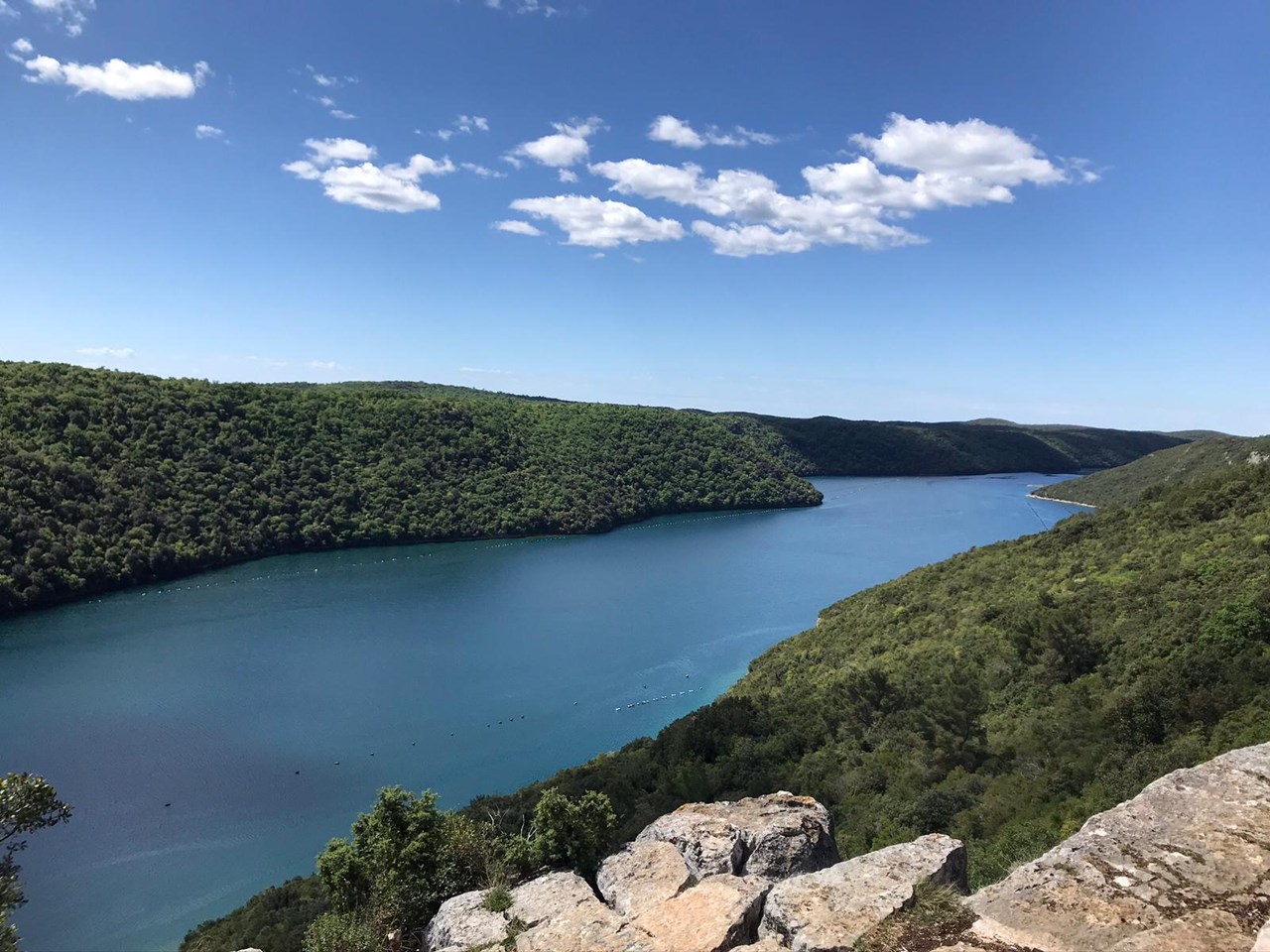Evidence of people living on the Istrian peninsula can be traced back to the prehistoric time.
Traces of the Paleolithic and the Neolithic culture (the Old and the New Stone Age) have been discovered here, as for example in the Cave of St. Romualdo, just above the Lim Channel. The ethnic belonging of these oldest inhabitants is not known.
The first inhabitants whose ethic belonging can be defined with certainty were the Histris and the Liburnians. The Histris domiciled major part of the peninsula (it seems that after them it got its name: Histris – Histria – Istria), while the Liburnians lived only on the north-eastern coast called Liburnia.
Besides with agriculture and cattle raising, the Histris and the Liburnians were occupied with maritime trade. They were also trading with ancient Greeks. Greek ships used to come to the North Adriatic to purchase the precious amber which had been brougt here by land from the distant Baltic. So the ships often entered also the harbour of Vrsar and the Lim Channel.

Traces of the Paleolithic and the Neolithic culture have been discovered just above the Lim Bay.
On the hills of the peninsula the Histris and the Liburnians built fortified settlements. These settlements had as a rule a circular ground-plan and were surrounded by defensive walls. There was a number of such fortificationds in the area between the river Mirna and the Lim Channel. They were built on the inaccessible, but strategically important spots. One of them was standing on the hill where today’s old town of Vrsar is situated, what can be confirmed by the archaeological finds (ceramics fragments).
Some hills in the vicinity were likewise inhabited in prehistoric times. So for examole, on the hill Gavanov vrh (ital. Monte Ricco), 1 km to the east of Vrsar, there is a significant archaeological location where ceramics fragments from the Bronze Age were found.
The settlement existed here in the Bronze Age, as well as in the Iron Age – a prehistoric fortification with the necropolis (burial ground). In the 1st century BC a rich Roman built a large country house (”villa rustica”).
Fragments of interesting rural villa remains of the water tank) have survived until the present days. The villa had a perisyle (space surrounded by columns) and floors of polychromatic mosaics. Samo walls were painted with polychromatic frescoes. In the ruin of the villa small archaeological finds (coins, ceramics) have been discovered. The evidance of its existence has been preserved in the name of the adjacent field: Alla villa.
Nevertheless, the real history of Vrsar has begun in the time of the Roman domination.